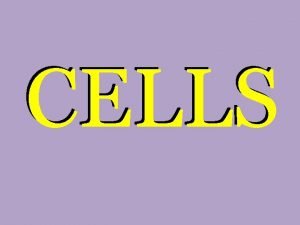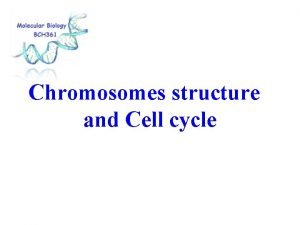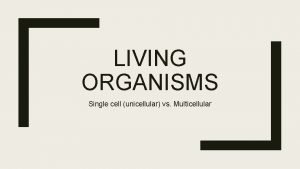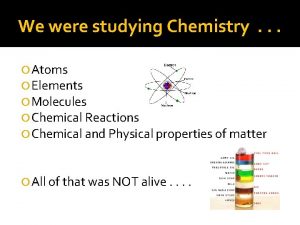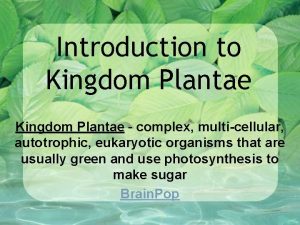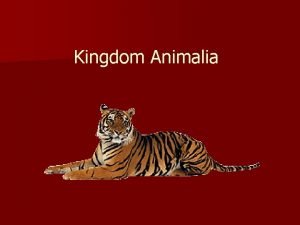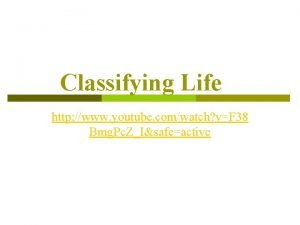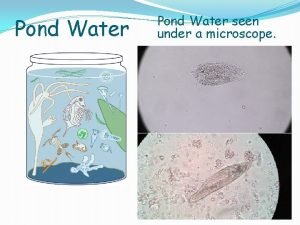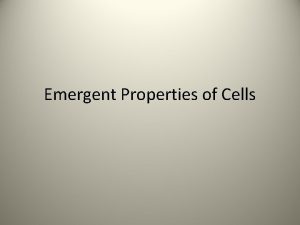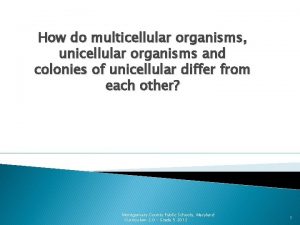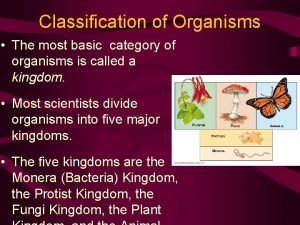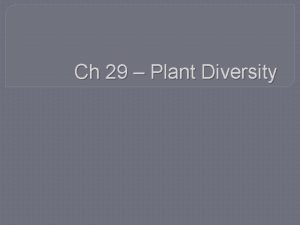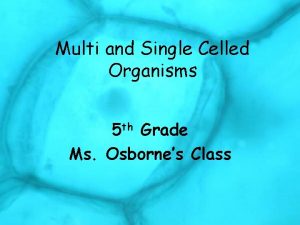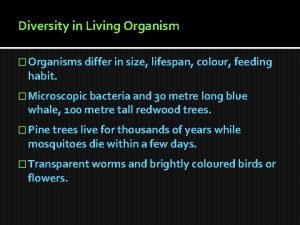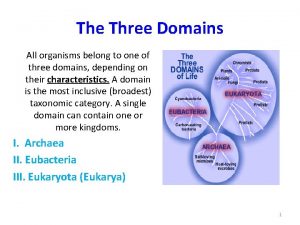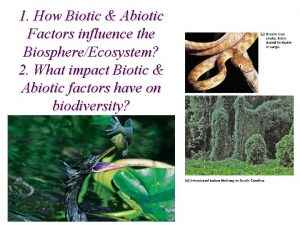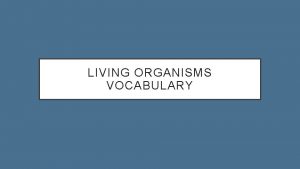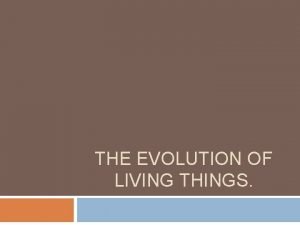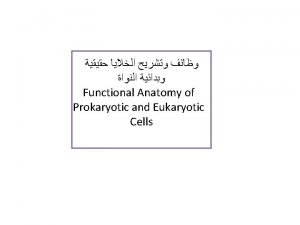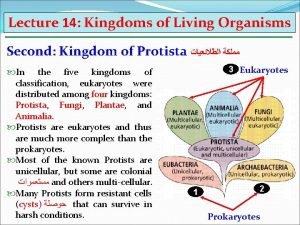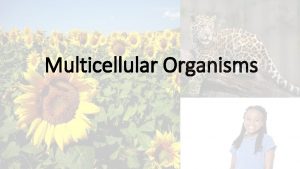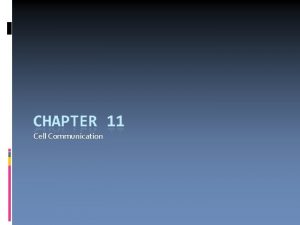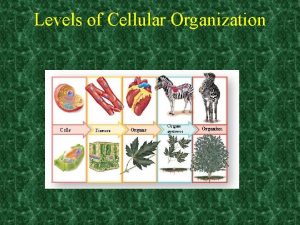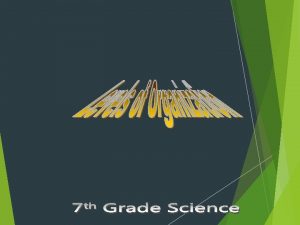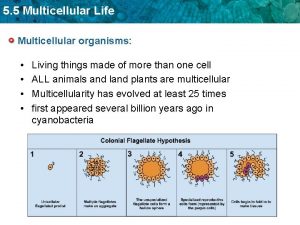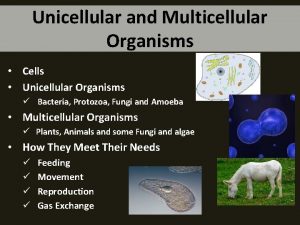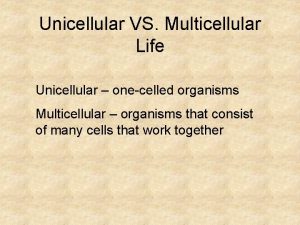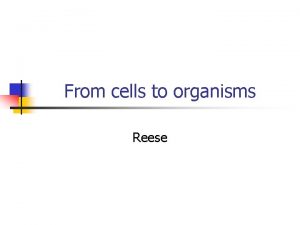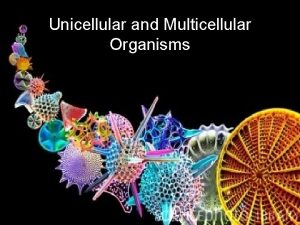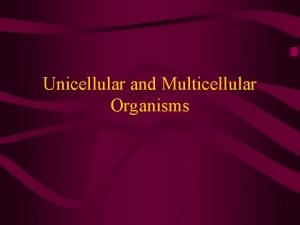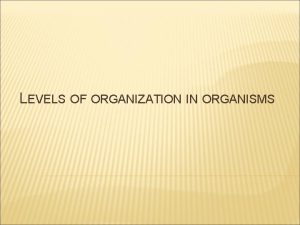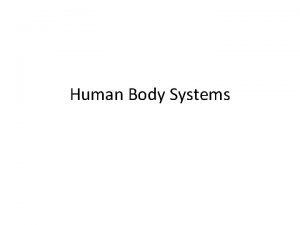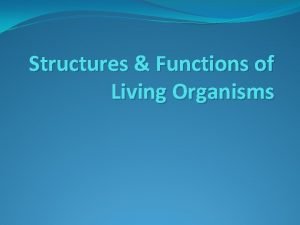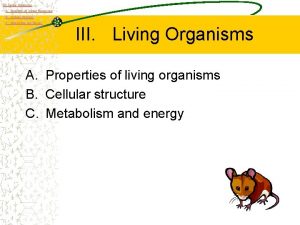Multicellular Organisms 1 Living Cells revision Cells are
































- Slides: 32

Multicellular Organisms 1

Living Cells- revision • Cells are the ‘building blocks’ of life. They are the living unit from which all organisms are made.

1. Organisms • Living organisms are made up of cells. – Unicellular organisms consist of one cell. – Multicellular organisms consist of many cells. l humans are made from an estimated 50 trillion cells!

Cells Most cells are specialised, meaning that each type of cell has a specific structure and function. They work together, supporting the different processes within an organism. The players in a rugby team are different shapes and sizes because each player does a different job for the team. Like rugby players, cells are different shapes and sizes because they perform different jobs.

Red Blood Cell • Function: – Transports oxygen • Features: – Large surface area – Contains haemoglobin

Nerve Cell • Function: – Carries electrical signals around the body • Features: – Long and thin. – Can carry electrical impulses

Muscle Cell • Function: – Allows movement of bone • Features: – Contains fibres that allow them to shorten

Sperm Cell • Function: – Fertilises an egg cell • Features: – Long tail for swimming

Root Hair Cell • Function: – Absorbs water and minerals from the soil • Features: – Large surface area

Palisade Cell • Function: – Main site of photosynthesis • Features: – Contains many chloroplasts

• Groups of cells with a similar structure and function which work together are called tissues. Some examples of tissues are: – – Muscle Lining of the lungs Phloem Xylem

• An organ is made from a group of different tissues, which all work together to do a particular job. Some examples of organs are: – – – Heart Lungs Brain Roots Stems

Organs work together to form organ systems e. g. the digestive system. Together the organ systems form the organism. How many organ systems can you think of? Hint – There are 12!!!


Stem Cells • • All cells start as basic cells. These are known as Stem cells are cells that have the ability to become any other cell type.

• • There are roughly 220 different types of cells found in the body. These cells are specialised meaning they have their own specific job to do.

Stem Cell Technology • Stem cells are unspecialized cells which divide by mitosis and selfrenew. They are important because they can change into other types of cells e. g. nerve cells or heart cells. • They are involved in growth and repair.

Stem Cell Technology • Stem cell therapy is a set of techniques that aim to replace cells damaged or destroyed by disease with healthy functioning ones. Researchers believe that stem cell therapy has the potential to dramatically change the treatment of human disease. However this is controversial.

Stem Cell Technology Stem cells an be derived from several sources: 1. Embryonic cells These are extracted from embryos. Often the embryo is destroyed after the cells have been extracted.

Stem Cell Technology 2. Adult Stem Cells These are present in adult tissue such as bone marrow, brain and blood. Our bodies use adult stem cells to repair damaged tissue.

Stem Cell Technology 3. Cord blood stem cells This source of stem cells is derived from blood found in the umbilical cord.

Stem Cell Technology • Stem cells have the potential to treat many diseases such as:

Parkinson's Disease • Parkinson's is a degenerative disease of the brain that affects the nerve cells involved in movement. – A tremor or fine shake while the person is at rest – Rigidity or increased tone in the body's muscles – Slowness of all movements (known as bradykinesia) – Unsteady balance (known as postural instability) – Beginning an activity may be difficult as the person affected is rigid and slow to get going. But once started people with Parkinson's speed up and move too fast, ending up almost running or out of control.

Spinal Cord Injuries • The spinal cord is a thick cable of nerves that runs through the neck and spine. Its main function is to transmit signals from the brain to all of the body's muscles. • If the neck or spine is injured, the spinal cord can also be damaged. This means the brain may no longer be able to transmit signals to the muscles, causing paralysis.

Retinal Diseases • • The retina contains millions of nerve cells that convert the particles of light coming into the eye into nerve signals. These nerve signals are then sent via the optic nerve to the brain, effectively allowing the brain to "see". Without a constant supply of blood the nerve signals begin to die, which can lead to a permanent loss of vision. Symptoms include: – – the sudden appearance of floaters – dark spots that float in your field of vision sudden short flashes of light in one eye.

Alzheimer’s Disease • • Alzheimer's disease attacks nerves, brain cells and neurotransmitters (chemicals that carry messages to and from the brain). Alzheimer’s disease is a progressive condition, which means that it will continue to get worse as it develops. Early symptoms include: – – • minor memory problems difficulty saying the right words These symptoms change as Alzheimer’s disease develops, and it may lead to: – – – confusion personality changes a total change in behaviour

Type 1 Diabetes • • • In type 1 diabetes, the pancreas (a small gland behind the stomach) does not produce any insulin. Insulin is a hormone that regulates blood glucose levels. If the amount of glucose in the blood is too high, it can seriously damage the body's organs. If you have type 1 diabetes, you will need to take insulin injections for life. You must also make sure that your blood glucose levels stay balanced by eating a healthy diet, taking regular exercise and having regular blood tests.

Problems • Stem cell therapy could accidentally pass viruses and other disease to people who receive cell transplants. Some research has also raised the possibility that stem cells may turn cancerous.

Artificial Organs • Stem cells have been touted as the treatment of the future for many diseases. They have even made it possible to rebuild areas of the body that have suffered from tissue destruction e. g. the growth of a windpipe.

Artificial Organs • Read the article on pages 7 -9 of your booklet and watch the video clip which follows. Claudia Castillo – the first ever patient to have an organ transplant using stem cells

Problems Task Research how stem cells may help people suffering from one of the conditions listed above. Answer Q’s on worksheet.

Task… • • • You will be issued with a character profile. Read through the information. Make a poster to help you present your characters beliefs. Include 1. 2 statements from the worksheets on your poster 2. Q & A session.
 What is multicellular and unicellular
What is multicellular and unicellular Mikael ferm
Mikael ferm Pyramid hesd
Pyramid hesd Passive progressive
Passive progressive What is cell called
What is cell called Cell division in multicellular organisms
Cell division in multicellular organisms Is a sunflower unicellular or multicellular
Is a sunflower unicellular or multicellular Multicellular animal name
Multicellular animal name Unicellular vs multicellular activity
Unicellular vs multicellular activity Multicellular organisms
Multicellular organisms How are unicellular and multicellular organisms alike
How are unicellular and multicellular organisms alike Which kingdom is autotrophic
Which kingdom is autotrophic Animalia characteristics
Animalia characteristics Multicellular organisms
Multicellular organisms Pond water
Pond water Why do multicellular organisms have emergent properties?
Why do multicellular organisms have emergent properties? Multicellular grade entity
Multicellular grade entity Kingdoms that contain consumers
Kingdoms that contain consumers Pterophytes
Pterophytes Is a hamster a multicellular organism
Is a hamster a multicellular organism Unicellular and multicellular organisms 5th grade
Unicellular and multicellular organisms 5th grade Member of the same species
Member of the same species Living organisms differ in
Living organisms differ in What are the six kingdoms
What are the six kingdoms Smallest living unit
Smallest living unit Three domains of living organisms
Three domains of living organisms Different types of living organisms
Different types of living organisms Small living creature tom
Small living creature tom Living organisms and their surroundings
Living organisms and their surroundings What is the smallest unit of living organisms
What is the smallest unit of living organisms Similar
Similar Fungi cell
Fungi cell مملكة البلازموديوم
مملكة البلازموديوم




